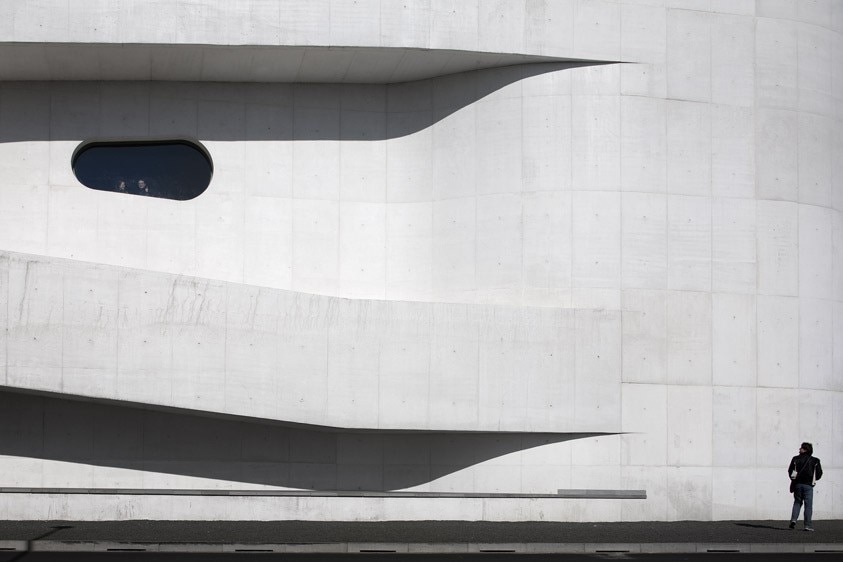Álvaro Siza’s studio sits on a gentle slope in a modest neighbourhood of Porto, overlooking the point where the Douro river flows into the Atlantic Ocean. The U-shaped building was designed by Siza himself in 1998 to also host the studios of Fernando Távora and Eduardo Souto de Moura.
Álvaro Joaquim Melo Siza Vieira (1933) was born in Matosinhos, Portugal. He completed his first building in 1954, before graduating from the School of Fine Arts of the University of Porto in 1955. Since then, his approach has challenged scholars trying to read isms into his work, looking at its evident coherency that is nonetheless fleeting, a method that turns out to be both intelligible and elusive. To paraphrase Siza, his projects start with an understanding of the place, a search for the stratified traces of the site through sketching. This hermeneutical approach, as Vittorio Gregotti defines it, shows empathy toward what is found, followed by its eloquent materialisation in the construction process. Siza’s work has been praised since the early stages of his career
Casa de Chá da Boa Nova (Leça da Palmeira, 1963) and the Leça swimming pools (1966) are taken as emblems of critical regionalism by the British architecture critic Kenneth Frampton for the relationship they establish with the natural and cultural context. But the Portuguese master’s work is more heterogeneous than that, and constantly evolving. See the Bairro da Bouça in Porto (designed in 1970 and completed in 2016); the Faculty of Architecture of Porto (1994); the Portuguese pavilion at the 1998 World Expo in Lisbon; the Serralves Foundation (Porto, 1999); and the Victoria and Albert Museum in London (2012).
Siza was awarded the 1992 Pritzker Architecture Prize and the 2012 Golden Lion for Lifetime Achievement by the Venice Biennale. In 2014, the architect donated his archive to the Calouste Gulbenkian Foundation, the Serralves Foundation (both of which preserve his Portuguese works) and the Canadian Centre for Architecture. Thanks to the joint efforts of these three institutions, Siza’s work from 1958 to 2012 is being digitalised and will be progressively accessible online.


